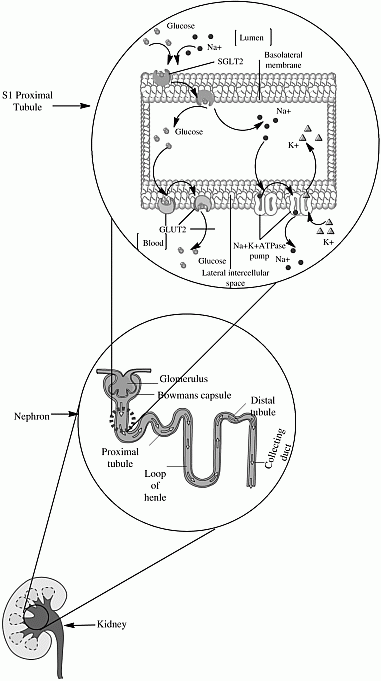SFEBES2012 Poster Presentations Obesity, diabetes, metabolism and cardiovascular (73 abstracts)
Renal sodium dependent glucose co-transporter 2 (SGLT2): A neoteric target for treatment of type2 diabetes mellitus
Danish Ahmed
Pharmaceutical Sciences, FHMSIASM, Sam Higginbottom Institute of Agriculture, Technology & Sciences-Deemed University, Allahabad, India.
Contemporary therapies to trim down the hyperglycaemia in type 2 diabetes mellitus (T2DM) generally involve insulin-dependent mechanisms and lose their effectiveness as pancreatic b-cell function decreases to a greater extent. Kidney emerges out as a novel and potential target to trim down the T2DM. The filtered glucose is reabsorbed principally through the sodium glucose co-transporter-2 (SGLT2), a low affinity transport system, which are present at the luminal surface cells that covers the first segment of proximal tubules. Competitive inhibition of SGLT2 therefore represents an innovative therapeutic strategy for the treatment of hyperglycaemia and/or obesity in patients with type 1 or type 2 diabetes by enhancing glucose and energy loss through the urine. Selective inhibitors of SGLT2 reduce glucose reabsorption, causing excess glucose to be eliminated in the urine; this decreases plasma glucose. SGLT2 inhibitors are coupled with osmotic dieresis and loss of weight which aid in reducing the blood pressure. The observation that individuals with familial renal glycosuria maintain normal long-term kidney function provides some encouragement that this mode of action will not adversely affect renal function. This novel mechanism of targeting kidney for the treatment of T2DM is reasonably valuable and is independent of insulin and clutch with the low risk of hypoglycemia.

Fig: Reabsorption of glucose from the renal proximal tubules by the sodium glucose cotransporters SGLT2 . Almost all of the glucose entering glomeruli in the afferent glomerular arterioles is filtered into the nephron fluid of the proximal renal tubules. Most (up to [|#2#|]90%) of this filtered glucose is reabsorbed in the initial proximal convoluted segment (S1) by SGLT2 located at the luminal surface of proximal tubular cells. Remaining glucose is reabsorbed from the filtrate in themore distal convoluted and straight segments by SGLT1. Glucose within the proximal tubular cells is then transported back to the interstitial compartment and thence to the plasma by the facilitative glucose transporters GLUT2 in the S1 segment, espectively. In normal individuals with an average plasma glucose concentration of 5–5.5 mmol/L (90–100 mg/dL), approximately 160–180 g of glucose is filtered daily, with less than 0.5 g/day of glucose appearing in the urine. Based on Bakris et al. and Bays
Declaration of interest: There is no conflict of interest that could be perceived as prejudicing the impartiality of the research reported.
Funding: No specific grant from any funding agency in the public, commercial or not-for-profit sector.
 }
}



